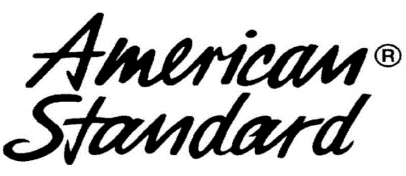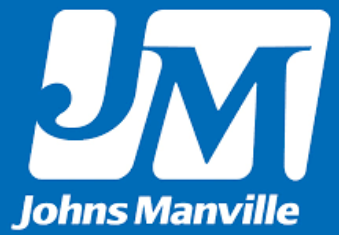WHAT IS A FEDERAL TAX CREDIT?
Some people are confused about what a Federal Tax Credit really is and is not. Hopefully, the information below will be helpful in preventing any further confusion.

- You can only make use of a Federal Tax Credit for a specific tax year if you have a Federal Tax Liability for the same period.
- If you do not have federal tax liability for a specific tax year, you will not be able to take advantage and claim a federal tax credit later, when you prepare your income taxes for the same period. This means that any federal tax credit that you may receive, will be a total waste.

Cool Remodeling YouTube® Video Library
© 2024 Copyright Owned By The Video Publisher
WHAT IS A SOLAR TAX CREDIT?
Due to recent legislation signed on July 4, 2025, the 30% Federal Residential Solar tax Credit (Section 25D) will expire on December 31, 2025. Homeowners who purchase and install a qualifying solar system and have it operational before the end of the year can still claim the credit on their 2025 tax return.
Changes To The Residential Solar Tax Credit
- Expiration Date: The “One Big Beautiful Bill”, signed by President Trump, ended the residential tax credit nearly a decade earlier than originally scheduled under the Inflation Reduction Act of 2022.
- Eligibility: To claim the credit, you must own your solar system, including systems purchased with cash or financed through a loan. If you have a solar lease or a power purchase agreement (PPA), the company that owns the system receives the credit.

How To Claim The Federal Tax Credit
If you install a solar system before the deadline, you must file IRS Form 5695 with your 2025 federal tax return to claim the 30% tax credit.
Please note:
-
Nonrefundable Credit
The credit is nonrefundable, meaning you cannot receive more back than you owe in federal income taxes. -
Carry-Forward Amount
If the credit is more than your tax liability, you can carry forward the excess amount to reduce your tax bill in future years.
Information About Federal Solar Tax Credits For Businesses:
LONG-TERM OUTLOOK FOR SOLAR INCENTIVES
-
Commercial Credits Remain.
Commercial solar projects and third-party-owned residential systems, such as leases and PPAs, use a different tax credit, namely: Section 48e – Clean Energy Investment Credit. -
The Latest Legislation
The latest legislation allows these tax credits to remain available, though with some restrictions and earlier termination deadlines than originally planned. -
State And Local Incentives.
Even with the federal credit ending, state and local programs may still be available. Please check this is a resource for finding incentives in your area: The Database Of State Incentives For Renewables & Efficiency (DSIRE). -
Higher Costs.
Without the federal credit, the upfront cost of residential solar will increase significantly, which may extend the payback period for homeowners. However, declining equipment costs and rising utility rates mean solar can still be a viable investment.
Cool Remodeling YouTube® Video Library
© 2024 Copyright Owned By The Video Publisher
WHEN CAN YOU CLAIM THE FEDERAL SOLAR INVESTMENT TAX CREDIT?
According to the Federal Solar Investment Tax Credit (ITC) guidelines:
- You can claim the solar tax credit only when you purchase the solar PV system by using personal funds or any type of financing, including PACE Financing or Personal Loan Financing.
- You can’t claim the solar tax credit when you obtain the use of the solar PV system through a Solar Lease or a Power Purchase Agreement (PPA).
In this case the solar leasing or solar financing company will be entitled to the solar tax credit and all rebates.

Cool Remodeling YouTube® Video Library
© 2024 Copyright Owned By The Video Publisher
WHAT COSTS CAN YOU CLAIM UNDER THE FEDERAL SOLAR INVESTMENT TAX CREDIT?
The Total Cost subject to the Federal Solar ITC includes the following costs:
- The solar PV system engineering design and permits.
- Preliminary site inspection and shading analysis.
- Solar PV panels and accessories.
- Racking, fittings and electrical cables.
- The inverter/s or micro-inverters.
- The electrical panel upgrade and relocation, if required, including cables, trenching, and all other solar-related material and labor costs.
- Removal and replacement of a part of the damaged roof under the solar PV system, if required.
- All other costs associated with the installation of the solar PV system.
- Solar batteries and all related system integration, labor, and installation costs.
The solar tax credit applies to both residential and commercial solar PV systems and solar batteries, and there is no cap on its value.

Cool Remodeling YouTube® Video Library
© 2024 Copyright Owned By The Video Publisher
SOLAR INVESTMENT TAX CREDIT
ADDITIONAL INFORMATION FOR RESIDENTIAL PROPERTY OWNERS
| RESIDENTIAL SOLAR PV COST EXAMPLE | |
|---|---|
| Description | Residential Solar PV Cost |
| The Total Purchase Price Of The Solar PV System | $20,000 |
| The Solar Tax Credit Percentage | 30% |
| The Solar Tax Credit Value | $6,000 |
| The Net Cost Of The Solar PV System | $14,000 |
Please Note:
- Once you purchase a solar PV system, you will be eligible to claim the solar tax credit for the year when the system was installed and be entitled to receive any available rebates. For tax purposes, the IRS requires you to complete Form 5695.
- You can’t claim the solar tax credit if you lease the solar PV system, or enter into a Power Purchase Agreement (PPA). In this case, the solar leasing company or the financing company will claim the solar tax credit and be entitled to receive all rebates.
- You must have federal income tax liability for the tax year period during which you wish to claim the solar tax credit.
- If you don’t have sufficient federal income tax liability for a specific tax year period during which you wish to claim the solar tax credit, you may apply a portion of the solar tax credit to write-off the existing federal income tax liability and roll over the unused portion of the solar tax credit into the next tax year period. IRS allows for a four-year window to roll over the unused portion of the solar tax credit.
- Please consult with your accountant or CPA to ensure that you file your taxes correctly.
Cool Remodeling YouTube® Video Library
© 2024 Copyright Owned By The Video Publisher
SOLAR INVESTMENT TAX CREDIT
ADDITIONAL INFORMATION FOR
COMMERCIAL PROPERTY OWNERS
| COMMERCIAL SOLAR PV COST EXAMPLE | |
|---|---|
| Description | Commercial Solar PV Cost |
| The Total Purchase Price Of The Solar PV System | $10,000 |
| The Solar Tax Credit Percentage | 30% |
| The Solar Tax Credit Value | $30,000 |
| The Net Cost Of The Solar PV System | $70,000 |
Please Note:
- Once you purchase the solar PV system, you will be eligible to claim the solar tax credit for the year when the system installation was completed. For this purpose IRS requires you to complete Form 3468.
- Commercial solar PV systems are subject to depreciation in accordance with the Modified Accelerated Cost Recovery System (MACRS).
- Please consult with your accountant or CPA to ensure that you file your taxes correctly.
Additional information about Federal Solar Tax Credits For Businesses is available online:
Cool Remodeling YouTube® Video Library
© 2024 Copyright Owned By The Video Publisher
LEARN MORE ABOUT THE SOLAR INVESTMENT TAX CREDIT ONLINE
The information below is provided in case you would like to enhance your knowledge about The Solar Investment Tax Credit and other types of tax credits:

Cool Remodeling YouTube® Video Library
© 2024 Copyright Owned By The Video Publisher
RESIDENTIAL HOME ENERGY TAX CREDITS
As a prudent homeowner, you probably would like to know how to maximize Residential Home Energy Tax Credits that may available to you during a specific tax period.
According to Internal Revenue Service (IRS), if you make qualified energy-efficient improvements to your home after Jan. 1, 2023, you may qualify for a tax credit up to $3,200. You can claim the credit for improvements made through 2032.
You may learn more at IRS - Residential Clean Energy Credit online.
Cool Remodeling YouTube® Video Library
© 2024 Copyright Owned By The Video Publisher
DISCLAIMER
Cool Remodeling, Inc. is not an accounting firm and doesn’t provide accounting and tax advice. You must consult with your personal accountant or CPA regarding any accounting and tax issue related to you, including your entitlement to the federal tax credit.
FINANCING OPTIONS FOR YOUR HOME ENERGY EFFICIENCY IMPROVEMENT PROJECTS
Once you decide to move forward with any type of a home energy improvement project, we will introduce you to the most suitable Financing Options in accordance with your specific needs. These options may include:
- No interest and no payment financing* for one year.
- Low payment options* with low interest rates.
- Secured* and unsecured financing loans.
* Subject to OAC (on approved credit).
Contact Us Today To Find Out Which Financing Option Will Be The Best One For You.
MEET SOLLY THE SEAL
Just in case you did not meet him yet, we would like to introduce you to Solly The Seal who is a very important member of the Cool Remodeling TM management team.
Solly’s main job is to approve all home energy efficiency products and provide his Seal of Approval.


WE ONLY WORK WITH ORGANIZATIONS AND BRANDS APPROVED BY SOLLY THE SEAL































































































